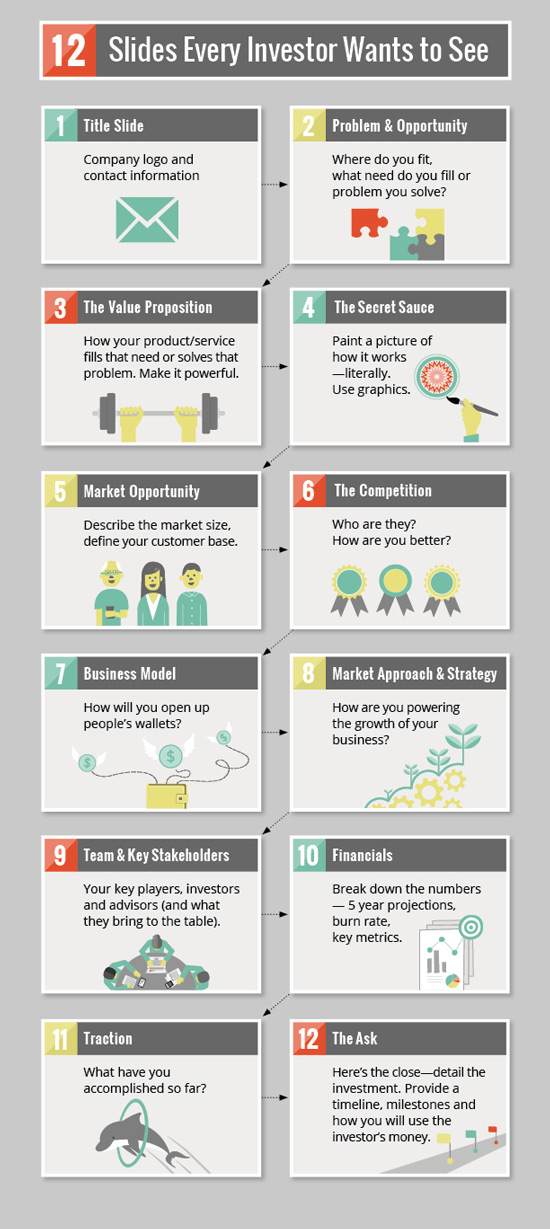Into the Shark Tank – Have a Pitch Deck that Bites Back
Welcome to the Shark Tank. Is your Pitch Deck ready?
This is it. The pitch – the nerve-shaking, potentially life-changing meeting. This is the moment you sink or swim. 10 minutes, max. That’s all you have. With so much at stake and such a small window of time, your pitch deck must be able to bite back.
When you go into the shark tank, you’d better have a pitch deck that bites back.
Just remember—your pitch deck is the appetizer, not a 10-course meal.
Intrigue – if we were to sum up the purpose of a pitch deck in just one word, that would be it. You see, a pitch deck’s purpose is NOT to answer every question. It’s not about bombarding them with information, stats, facts. And it’s definitely not there to close on the immediate investment. This your first touchpoint. Get them interested first.
Each slide must deliver only the precise information the investor is looking for. But most people are guilty of information overload.
The 3 things every investor looks for in a pitch deck:
You must tell a compelling story of:
- The market: What is the opportunity?
- The magic of your product/service: How does it solve a big problem?
- Your team: Are you capable of bringing it to market?
All in a matter of 10 – 12 slides. Yes, it can be done. If you do your homework and prepare.
Think of Air B&B…They realized people wanted a cheaper, more homey place to stay when traveling than a hotel—and the homeowners needed a new way to make money. They solved a problem on both sides. The rest is history.
A pitch deck’s main purpose is to whip up excitement, wonder and leave potential investors wanting to
know more. That comes in the second meeting.

Do your homework
Underlying a captivating brand story, beautiful visuals and an intriguing concept should lie unshakable business figures, research and data. All of which takes time to assemble and synthesize.
Ever see a contestant on Shark Tank and Mr.Wonderful asks them why they value their company at a million dollars? And they stand there with their mouth open? Real life investors are no different. Be prepared. That shows an investor you are worth investing in.
Information gathering is the most important and time-consuming part of the pitch deck process. Only when that’s done can you put it into a slide deck.
Here’s the structure to follow in your pitch deck and the precise information investors want to see.

- Title slide: Company logo, contact information
- Problem & Opportunity: Where do you fit, what need do you fill or problem you solve?
- The Value Proposition: How your product/service fills that need or solves that problem. Make it powerful.
- The Secret Sauce: Paint a picture of how it works—literally. Use graphics.
- Market Opportunity: Describe the market size, define your customer base.
- The Competition: Who are they? How are you better?
- Business Model: How will you open up people’s wallets?
- Market Approach & Strategy: How are you powering the growth of your business?
- Team & Key Stakeholders: Your key players, investors and advisors (and what they bring to the table).
- Financials: Break down the numbers – 5 year projections, burn rate, key metrics (enlist a professional to help if needed).
- Traction: What have you accomplished so far?
- The Ask: Here’s the close—detail the investment. Provide a timeline, milestones and how you will use the investor’s money.

Shooting Fish in a Barrel – 6 Tips for Nailing Your Pitch Deck Actual Presentation
Watch anyone caught in the Shark Tank net.
They better have a pitch that bites back! These people make their presentation without a single slide. They have to have all of the above information incorporated into their DNA. And they do it on camera.
- Practice – that’s what it takes. Practice in front of the mirror, friends, family, co-workers. Video yourself and study your body language. Then repeat, repeat, repeat every day, even for 5 minutes at a time.
- Eye contact – It’s critical for creating a connection with the investors – for keeping their attention and establishing confidence in your product. And for that, you need to know your pitch deck by heart.
- Make it strikingly visual – Images are processed by the brain 60,000 times faster than text. It’s simple – we humans are hardwired to rapidly process visuals. Our best advice? Leave your pitch deck design to the professionals. Hire a designer to create charts and illustrations instead of using a thousand words.
- Passion. Be unabashed in showing yours – It’s contagious, and if it seems as though you don’t believe in your product, why should your potential investors?
- Protect yourself – Add: “Confidential & Proprietary. Copyright© [Name of Company]. All Rights Reserved.” at the bottom of every slide.
- Be inspired by corporate giants – corporate giants that include Google, LinkedIn and Facebook. The following pitch decks were done years ago, but they worked.
- They lead to the most profitable, innovative and inspiring brands in the world.
LinkedIn’s Pitch Deck for Its Series B Round
Facebook’s Original Pitch Deck from Spring 2004
Airbnb’s Pitch Deck for Its Angel Round
Mint.com Pre-Launch Investor Pitch Deck
Make These 8 Mistakes, and Prepare to Be Eaten Alive
Every bit as important as our tips for nailing your pitch deck structure, are these 6 all too common, and almost always fatal mistakes. Make them at your peril.
Never…
- Be an information dumper: This is about selling the magic, not information overload.
- Use head-spinning jargon, techno-terms and unfathomable acronyms – keep your language simple.
- Create way too many slides, stuffed to their edges with far too much information
- Design “wordy slides”: Instead, learn from a guru – stick to Guy Kawasaki’s 10/20/30 Rule of Powerpoint. 10 slides / 20 minutes to present the slides / 30 point font or greater.
- Overwhelm with product detail – keep it minimal. You’re providing an intriguing insight into the opportunity, not a full-blown business plan. Yet.
- Ridicule, vilify or criticize the competition. Just don’t. Know your competitors. Respect them. Take their threat seriously.
- Work on assumptions you can’t back up with solid data.
- Be overconfident or, worse, arrogant – Be confident in your product, but open to the wisdom of your investors.
 Your investors are time-short and looking for value.
Your investors are time-short and looking for value.
Tell your story in a way that resonates, demonstrate solid financials and make it vividly visual. These are the most critical 10 minutes that have ever sped by. Have an investor Pitch Deck that bites back!





